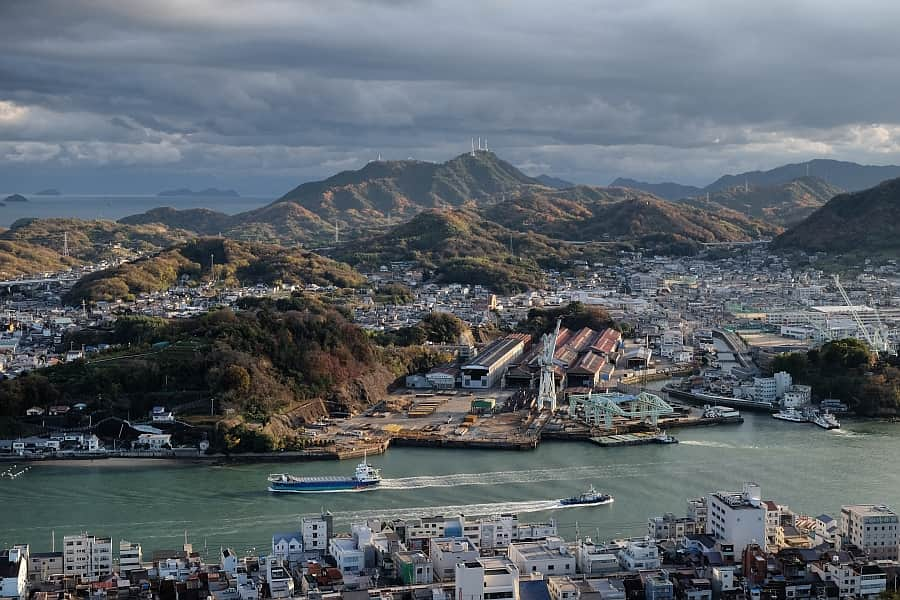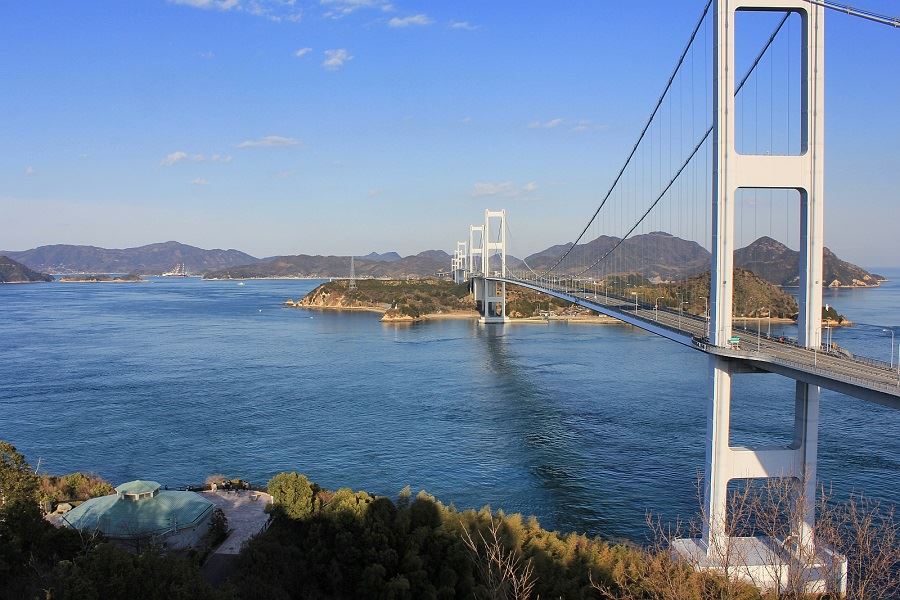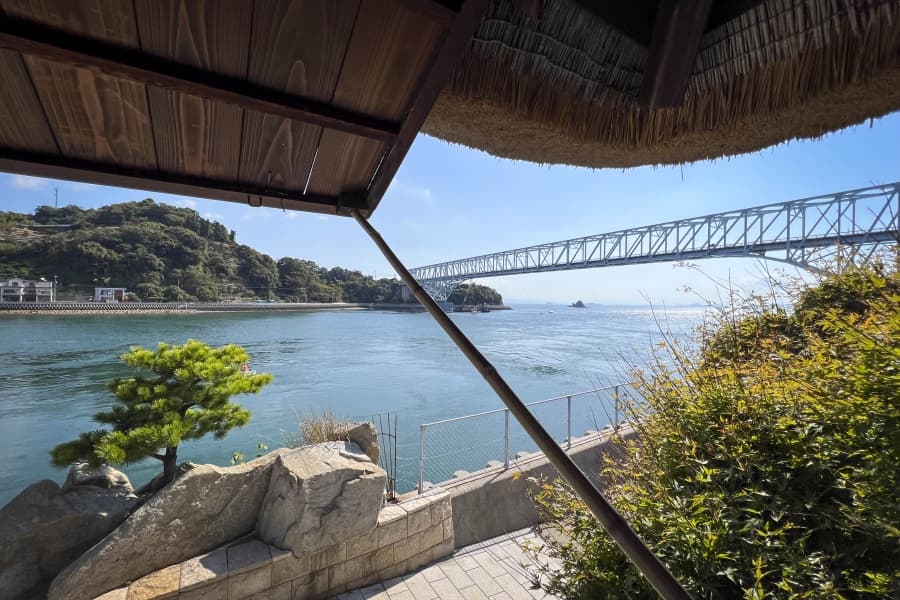SETOUCHI TOURS
Tobishima Kaidō vs. Shimanami Kaidō
A comparison of the island routes from a cycling point of view
Home » Tobishima Kaidō vs. Shimanami Kaidō
Tobishima Kaidō vs. Shimanami Kaidō
The Shimanami Kaidō between Onomichi and Imabari already has considerable name recognition, especially among cyclists. Another similar cycling route, the Tobishima Kaidō in Kure is almost unknown. Here we look at both routes and compare their attractions.
The Shimanami starts on the mainland of Japan and crosses the Seto Inland Sea to Honshu. Apart from a 5-minute ferry ride at the start, you can cycle right across to Shikoku. The shortest route is 70 km, which can easily be cycled in a day, although doing so misses most of the interesting places on the islands. The Tobishima is 44 km long, a distance that can be done uninterrupted in a couple of hours. It starts in Kure city and crosses five islands, ending at Okamura Port, in the middle of the Inland Sea. From here, unless you cycle back to Kure, you have to take a ferry to Ōmishima island or Imabari. This requirement to take a ferry to complete the trip makes the Tobishima considerably less convenient than the Shimanami, and you need to check the ferry times carefully.
The positioning of the islands on the Shimanami creates interesting lagoon-like areas, and since the bridges aren’t arranged in a straight line, you often see one of the bridges you’ve already crossed from another. The Tobishima however has its bridges in a line, and so you never see one from another. Instead on the northern side of the islands you can see Honshu quite close by, and to the south, Shikoku in the middle distance. Imabari is quite clearly visible, as are the pylons of the Kurushima Straits Bridge.
Previous
Next
The Shimanami islands are home to a good deal of industry, especially shipbuilding and quarrying. As you cycle, you pass workshops that produce specific parts of ships. These are transported on barges pulled by tugs to large shipyards with forests of cranes. At noon, workers pour out of the shipyards to get their lunch. Some of the islands have been cut away in places to get at the high quality limestone and granite. Japan’s national parliament building is clad in stone from quarries on Ōshima island. Besides the quarries, you’ll see many stone working facilities beside the route, displaying examples of their work such as jolly Buddhas and stone lanterns. Depending on your point of view, this industrial activity can add interest or be regarded as an eyesore. On the Tobishima, apart from a little quarrying, there’s very little industry besides fishing. This makes the Tobishima a much quieter, more bucolic experience.
Since the population of the Shimanami islands is much large than that of the Tobishima, the Shimanami has restaurants, cafés, supermarkets, and convenience stores at convenient intervals. There’s considerable choice. There’s even a craft beer brewery and winery. In contrast, there are no convenience stores at all on the Tobishima, the few supermarkets are very sparsely stocked, and the few restaurants are open at eccentric and unhelpful times. Consequently, you have to bring your own comestibles, or plan your route around whatever eateries are available at the time.
Both the Shimanami and Tobishima have a preponderance of guest houses and glamping facilities, but the Tobishima has only one real hotel, at Kenmin no Hama. However, you can’t be sure of getting a meal here. There are numerous full-service hotels on the Shimanami.
The Shimanami is a full-fledged tourist destination with many attractions. There are museums and art galleries, significant shrines and temples, and the cruises into the rapid tidal currents offer a truly unique and exciting experience. The sight of big ships being constructed right before your eyes is also memorable and photogenic. On the Tobishima, there are only really two places with touristic attractions. On the eastern side of Shimokamagari island, the street of museums including Shōtōen and the Rankaku Museum makes a pleasant afternoon’s diversion. And on Okamura island, the picturesque old port of Mitarai is a very nice place to stroll, and learn about the marine traffic through the Inland Sea that connected the Japanese archipelago through trade.
Some things that both routes have in common: A safe environment for cycling with little traffic; picturesque fishing villages; abundant mountain and coastal birdlife; attractive beaches suitable for swimming; and endless views of the beautiful Seto Inland Sea.
Previous
Next
Related Tours
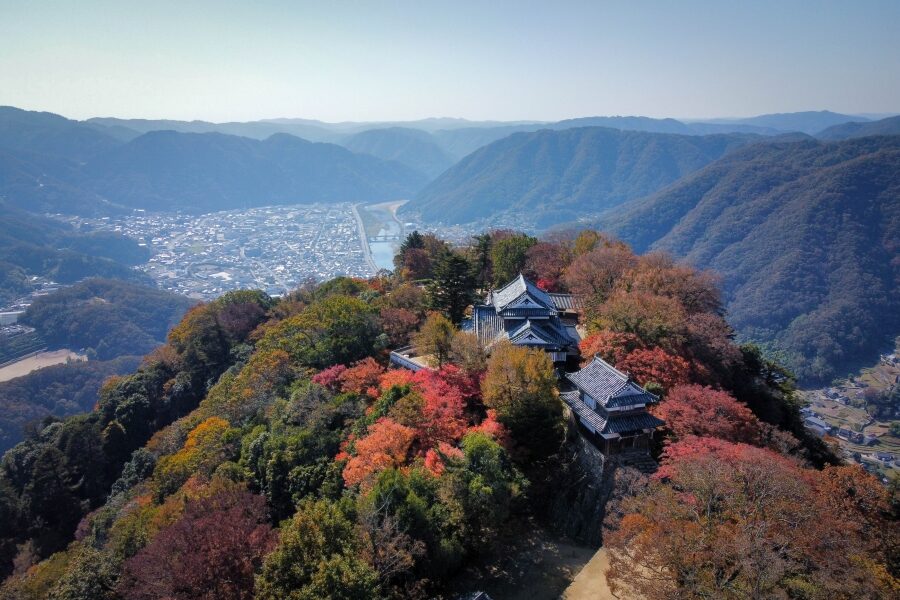
6 Days
¥498,000
This tour visits the major sights of Okayama, Shimane, and Hiroshima prefectures, focusing on the small historic cities of each region, and the natural wonders found in the countryside between them.
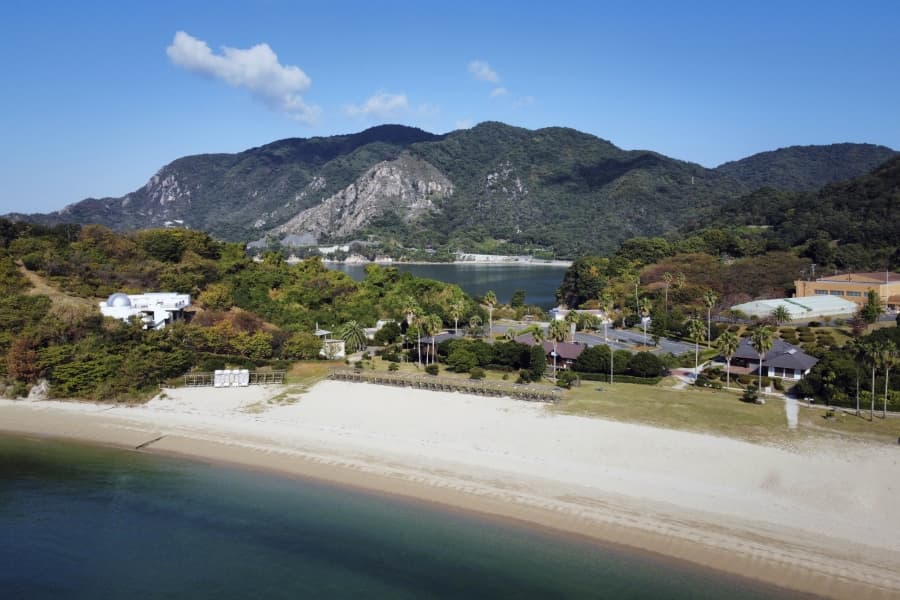
2 Days
¥188,000
This tour visits islands in Hiroshima and Ehime, and some sights in the coastal region of Honshū.
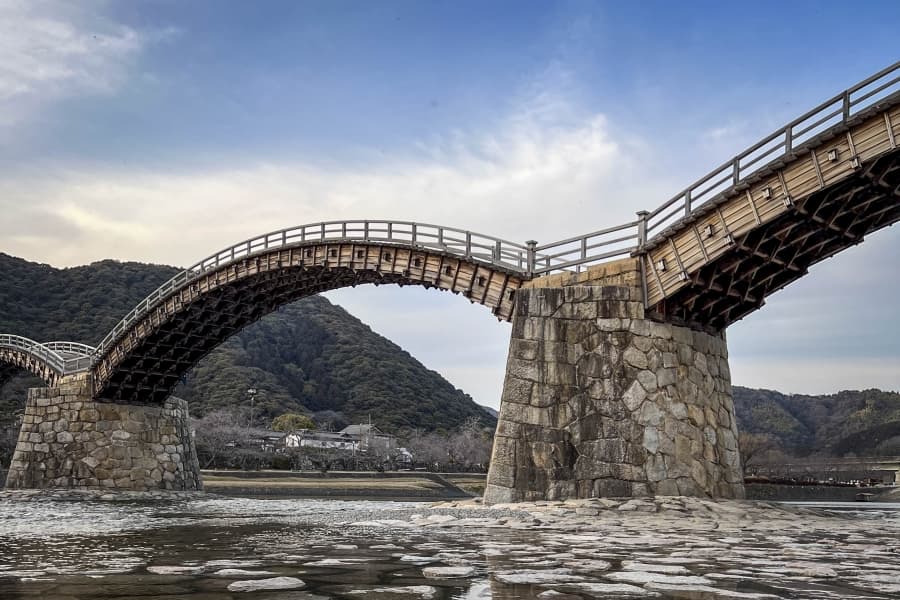
6 Days
¥498,000
This tour visits the major sights of Yamaguchi, Shimane, and Hiroshima prefectures, focusing on the small historic cities of each region, and the natural wonders found in the countryside between them.
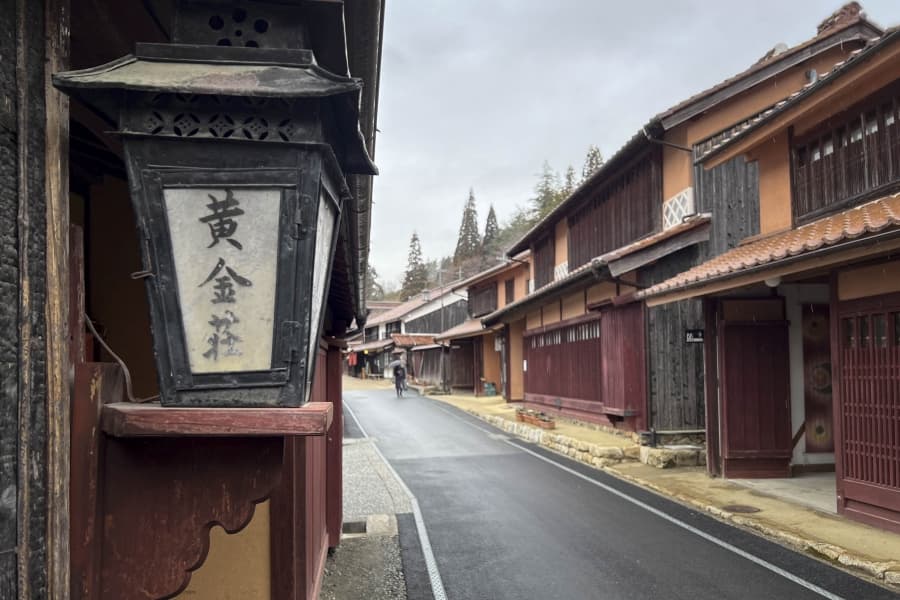
2 Days
¥188,000
This tour visits major sights of Okayama and Tottori prefectures, focusing on small historic cities and natural wonders.

